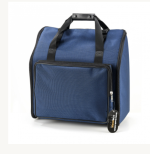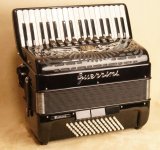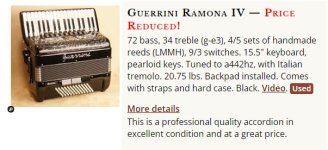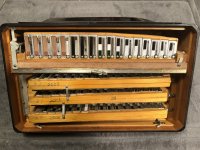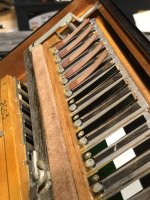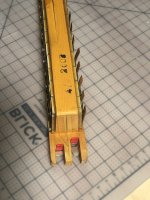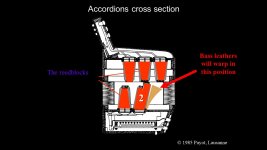Hello! I have a Guerrini Ramona IV 72 bass piano accordion that I keep in a soft Fuselli Gigi Bag that looks like the attached photo. I've found conflicting information regarding the best position to store an accordion while it's in its case, so I'm a little confused. Some say to store it with the keyboard facing upward and parallel to the floor, and this case is oriented to stand that way, but I've also seen lots of folks saying to store it in the playing position with the keyboard perpendicular to the floor. I want to make sure I position it correctly when not in use so as to avoid gravity induced damage to any internal parts.
So which way up should I position it when I'm not playing it? Or does it only matter if you don't play it for long periods of time?
Thanks so much!
So which way up should I position it when I'm not playing it? Or does it only matter if you don't play it for long periods of time?
Thanks so much!

